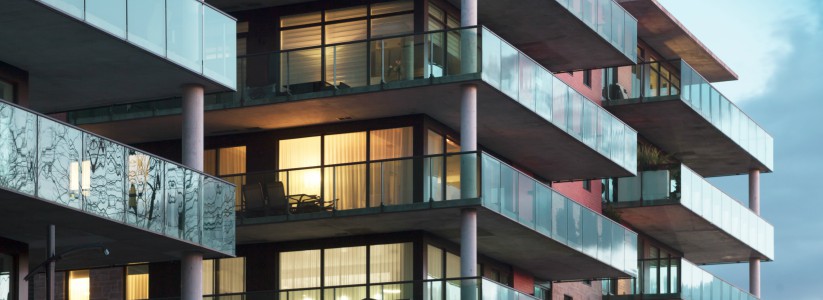Even the decentralised energy sector sometimes struggle to understand what is community and district heating and the differences between them. Therefore we thought it would be useful to explain what they are and to demonstrate the differences, clearing up some of the common preconceptions.

But first - what is a heat network?
“Heat network” is a new (ish) term to many. “Heat Network” is defined in the Heat Network Regulations as the general term that describes both Community and District Heating networks. It explains the heat infrastructure in its entirety; including the energy centre, plant room/substations, the pipework in between the two, the dwelling internals up to the heating system radiators.
Heat networks distribute heat using insulated distribution pipes from a central heat source to apartments and buildings. The heat is then used to warm homes and heat domestic hot water.
The central heat source can be anything from a single gas boiler in a block of flats to a large city centre district heat network, using waste to energy, or waste heat from industrial processes.
Did you know: We waste enough excess heat to heat every home in Britain, if only we could move the heat from where it is wasted to where it is needed?
Why are heat networks important?
Heating our homes and offices with gas is a significant source of carbon emissions and air pollution. In fact, it is one of the largest sources of pollution in our cities, hence why cleaning up heat is a now a priority for the government to meet our 2050 carbon reduction targets. As part of their plan, the Government has an ambition to grow heat networks from 2% currently to meet 20% of UK heat demand.
Of course, many heat networks are currently using gas as their main energy source; however, they are still a lower carbon alternative to individual gas boilers. To ensure heat networks continue to support the Government’s plan to meet net zero by 2050, the energy source for heat networks will have to change and it is likely that heat pumps and energy from waste will become the most likely candidate to replace gas.
Regulation of heat networks
The Government are working on several initiatives to enable and attract investment into heat networks, which includes regulations. These regulations will cover customer protection and technical standards, funding for converting and improving existing heat networks and funding for new low carbon heat networks. The Government will also be introducing heat network zoning, where buildings in certain areas will be obliged to connect to heat networks. In essence, heat network operators and customers will be given the equivalent statutory rights as the electricity and gas industry. Watch this space for more information on these initiatives.
But returning to the original question….
What is community heating?
Community, or communal heating, is a term that covers smaller heat networks which supply heat to a single building or multi building site. This type of heat network is usually owned by the building or development owner (freeholder) who may be a private company or social landlord. It is often the responsibility of the building management agency or social housing provider to arrange for the maintenance and operation of the heat network, including the metering and billing provision.
The Heat Network (Metering and Billing) Regulations include a specific definition of Communal Heating for the purpose of the act… this definition is a bit more restrictive than Switch2 describe and reserves the term of a boiler plant serving a single building.
It should be noted that most communal heating schemes are based on gas boilers. In the future, building owners will have to think about how they are going to decarbonise their systems. This may be converting from gas boilers to heat pumps or connecting into a nearby district heating scheme
Example - Sheffield City Council (SCC) operate several community heating schemes which provide energy to 5,800 residential dwellings across the city. 500 of these are on community heating schemes where SCC purchase heat (at a heat exchanger and bulk meter in the community heating plant room) supplied by the Sheffield District Heating Network. The additional 5,300 dwellings are on community heating schemes with their own heat generation, where SCC purchase gas and biomass.
So, what is district heating?
District heating is the distribution of heat from large scale generation and waste heat sources around large areas, usually within cities, often serving commercial loads but also connecting to residential buildings. District heating has a different scale of engineering to community heating, it is much larger and often includes large pipes laid underneath roads, whereas community heating pipes are generally inside buildings.
Example – The Leeds PIPES network is a £45 million district heat network which will connect 1,983 council homes and numerous businesses around Leeds City Centre. The heat will be generated at Leeds’s Recycling Energy Recovery Facility (RERF), which will then be used to provide low carbon heat and hot water to residential and commercial properties across the city centre.
Why is it important to note these differences?
It is common in the industry for these definitions to be misconstrued and misunderstood. The industry is currently exposed to a number of issues, including those surrounding ownership, customer service, reliability, cost of heat and competition. A clear understanding of the differences may help the debate around answering questions such as:
- Who should own and run community heating systems?
- Who should own and run district heating systems?
- When does community heating become district heating?
- Should owners of community heating systems be encouraged to connect to district heating supplies when they are built out, or should they have a choice, generate their own heat?
Food for thought
In 2018 the Competition and Markets Authority (CMA) carried out a study into the heat network industry, prompted by complaints from customers living in buildings with communal heating systems.
At Switch2, we have long held the view that district heating, the business of distributing heat from large scale energy centre across cities works and is governed well. However, the same cannot be said for communal heating schemes which are specified, built, and operated by the building industry, often by developers of new residential developments who do not have specialist knowledge.
Unlike district heating, the supply chain in the UK is inexperienced and building standards in general are not particularly high. Along with many specialist heat network companies, Switch2 believe that the supply chain needs improve, both from the governance and ambition perspective through to the design build and operation. Indeed, Switch2 have been and actively continue to support the ADE CIBSE CP1 and Heat Trust initiative which were set up to address these issues.
There is still more to do however, and the business of community heating cannot be left to generalists. Specialist practitioners with experience in operating are needed and should be involved at all stages of the communal heating procurement process.
Want to know more?
If you what help understanding how to procure or operate a successful, reliable, and efficient heat network please come and talk to us.



